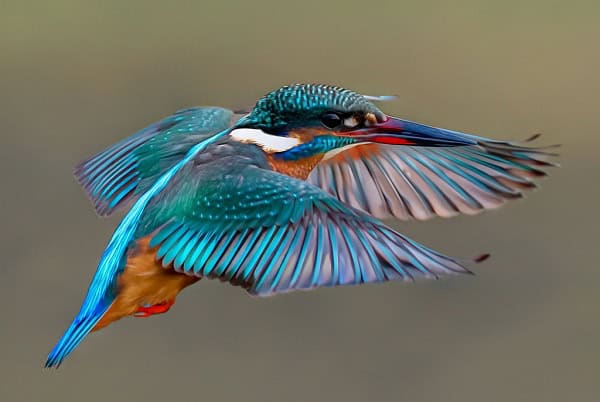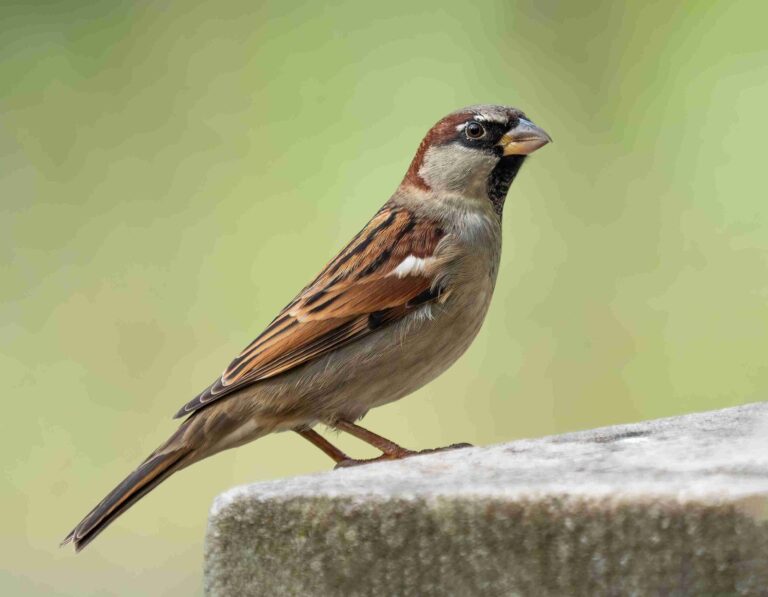Kingfisher Bird: A Complete Guide to This Stunning Hunter
The Kingfisher bird is one of the most visually striking and fascinating creatures in the bird world. With its vibrant plumage, razor-sharp hunting skills, and a presence in diverse regions, the Kingfisher has captured the imagination of birdwatchers and nature enthusiasts for centuries. Known for their remarkable ability to dive into the water and snatch fish with astonishing precision, these birds are often seen as symbols of patience, prosperity, and agility. Whether you’re curious about their unique mating rituals, nesting behaviors, or their role in the ecosystem, this guide will delve into everything you need to know about the Kingfisher bird, its habits, and its place in the natural world.
Key Takeaways
- Kingfisher birds are known for their incredible hunting abilities, particularly their precision in catching fish.
- They inhabit a wide variety of ecosystems, primarily near rivers, lakes, and wetlands, but are adaptable to other environments as well.
- With over 90 species worldwide, Kingfishers display an array of vibrant colors and sizes.
- Environmental threats such as habitat destruction and water pollution pose challenges to their populations.
- Their unique mating and nesting behaviors further highlight their fascinating place in the animal kingdom.
Habitat and Distribution of the Kingfisher Bird
The Kingfisher bird has an expansive global distribution, inhabiting various ecosystems ranging from riverbanks and wetlands to forests and coastal regions. They are particularly prevalent in areas that provide an abundant food source, especially near fresh water, which is crucial for their survival and hunting strategy.

Common Habitats of Kingfisher Birds
Kingfishers thrive near bodies of water such as rivers, lakes, wetlands, and marshlands, where they can easily hunt for fish, amphibians, and insects. Some species have even adapted to urban environments, frequenting parks and ponds in cities, though they are far more common in rural areas with less human interference.
Kingfishers are found across Asia, Africa, and Oceania, with significant populations in countries like India, Australia, and the tropical rainforests of Africa. In Europe and the Americas, they are fewer in number but still hold a prominent place in local ecosystems.
Climate Preferences and Migratory Patterns
While Kingfisher birds are generally non-migratory, certain species adjust their ranges based on climate changes. Species in temperate regions may shift closer to the equator during colder months, seeking warmer climates with unfrozen water sources that allow them to continue hunting.
Physical Characteristics of Kingfisher Birds
The Kingfisher is often recognized by its vivid plumage, streamlined body, and distinctive long, sharp beak designed for precision hunting. Though size and color can vary dramatically across species, their overall appearance makes them easily identifiable to birdwatchers worldwide.
Color Variations and Sizes
Kingfisher birds are known for their dazzling array of colors, with the most common shades being electric blue, emerald green, and fiery orange. For example, the Common Kingfisher boasts a striking blue-green back with an orange belly, while the Pied Kingfisher, primarily black and white, blends in more with its surroundings.
In terms of size, Kingfishers range from the tiny African Dwarf Kingfisher, which is around 10 cm long, to the larger Giant Kingfisher, which can grow up to 45 cm. Their body structure is typically robust, with short legs and large heads.
| Species | Length | Weight | Primary Colors |
|---|---|---|---|
| Common Kingfisher | 16-17 cm | 30-40 g | Blue, orange |
| Pied Kingfisher | 25-30 cm | 90-100 g | Black, white |
| Azure Kingfisher | 17-19 cm | 30-40 g | Blue, white |
| Giant Kingfisher | 42-45 cm | 255-426 g | Black, white, rusty brown |
Beak Shape and Its Role in Hunting
The Kingfisher’s beak is its most vital tool for survival. Long, pointed, and sharp, it is perfectly adapted for catching and holding onto slippery prey like fish. The beak’s unique shape allows Kingfishers to dive into water at incredible speeds without creating much splash, making them incredibly efficient hunters.
Kingfisher’s Hunting and Feeding Habits
The Kingfisher bird’s reputation as a skilled hunter stems from its specialized hunting techniques and sharp predatory instincts. Most Kingfisher species rely on aquatic prey, primarily fish, though their diet can also include insects, amphibians, and crustaceans.
Hunting Strategy and Techniques
Kingfishers typically hunt by perching on a high vantage point near the water, scanning the surface for any sign of movement. Once prey is spotted, they dive headfirst into the water with great speed and precision, capturing the prey with their strong beak. They then return to their perch to devour their catch, often hitting it against a hard surface to kill it before swallowing.
Kingfishers possess extraordinary vision, enabling them to judge distances and detect prey even through the distortion of water. This, combined with their aerodynamic body and quick reflexes, makes them formidable hunters.
Hunting Techniques in Different Species
While most Kingfishers rely on diving for fish, some species have adapted to different food sources. For example, the Pied Kingfisher is known to hover over the water before diving, while forest-dwelling species like the Woodland Kingfisher primarily hunt insects and small reptiles.
For a closer look at the Kingfisher’s hunting prowess, you can watch this YouTube video demonstrating their technique in real-time.
Kingfisher Bird Species: A Global Look
With over 90 species of Kingfishers worldwide, they are a highly diverse group, differing in size, coloration, and behavior. Though they share common traits, each species has adapted to its environment in unique ways.
Notable Kingfisher Species
- Common Kingfisher: Found in Europe and Asia, this small bird is known for its brilliant blue and orange plumage. It inhabits freshwater bodies and is often seen perched by rivers and lakes.
- Pied Kingfisher: This large black-and-white bird is native to Africa and parts of Asia. It is particularly known for its ability to hover above water before diving.
- Azure Kingfisher: Native to Australia, the Azure Kingfisher is a small bird with a dazzling combination of blue and white feathers. It inhabits mangroves and riverbanks.
| Species | Region | Main Diet |
|---|---|---|
| Common Kingfisher | Europe, Asia | Fish, insects |
| Pied Kingfisher | Africa, Asia | Fish, insects |
| Azure Kingfisher | Australia | Fish, crustaceans |
For more information on Kingfisher species, explore global bird conservation resources such as the International Union for Conservation of Nature (IUCN).
Kingfisher Mating and Nesting Behaviors
Kingfisher birds exhibit fascinating and often elaborate mating and nesting behaviours, contributing to their mystique in the natural world. Males engage in courtship displays, offering gifts of food to females as a way of proving their suitability as a mate.
Unique Courtship Rituals
Mating rituals vary between species, but most involve the male performing an aerial display or vocalizations to attract a female. Once a pair bonds, they work together to dig a burrow into a riverbank, which serves as their nest. Kingfishers are known for their excavating skills, using their sharp beaks to create deep tunnels where they lay their eggs.
Parental Care and Nesting Habits
Both parents share the responsibility of incubating the eggs and feeding the chicks. The burrow provides protection from predators and the elements, ensuring a safe environment for the young. Kingfisher chicks are altricial, meaning they are born blind and helpless, relying entirely on their parents for survival.
Watch this YouTube video to see Kingfisher courtship behaviours in action.
Conservation Status: Threats Facing Kingfisher Birds
Although Kingfisher birds are widespread, many species face significant threats due to human activity and environmental changes. Habitat loss, particularly the destruction of wetlands and pollution of freshwater sources has led to declines in certain Kingfisher populations.
Key Conservation Threats
- Habitat Destruction: Deforestation, urbanization, and the draining of wetlands are major threats to Kingfisher habitats, forcing them to relocate or adapt.
- Water Pollution: Contaminated water bodies reduce the availability of prey and pose health risks to Kingfishers.
- Climate Change: Changes in weather patterns and rising temperatures can affect the availability of suitable habitats and food sources.
Conservation Efforts and How You Can Help
Several conservation organizations are working to protect Kingfisher habitats and promote awareness about their plight. Governments and environmental groups focus on preserving wetland ecosystems and promoting cleaner waterways. You can contribute by supporting wildlife conservation organizations and participating in local efforts to clean up rivers and lakes.
Learn more about how to help Kingfisher conservation efforts by visiting the World Wildlife Fund.
Interesting Facts About Kingfisher Birds
Kingfisher birds are
full of surprises. From their extraordinary eyesight to their symbolic significance in various cultures, these birds have long been fascinating.
- Remarkable Vision: Kingfishers have binocular vision and can see through water, allowing them to hunt with unparalleled accuracy.
- Symbolism: In many cultures, the Kingfisher is a symbol of peace, prosperity, and good luck. In Greek mythology, the bird is associated with the sea gods.
- Speed: Kingfishers are incredibly fast, with some species capable of diving at speeds of up to 25 mph.
| Fact | Details |
|---|---|
| Vision | Can detect prey underwater with high precision |
| Symbolism | Represent peace and prosperity in various cultures |
| Record Dive Speed | Up to 25 miles per hour |
Frequently Asked Questions
What do Kingfisher birds eat?
Kingfishers primarily eat fish, but they also consume small amphibians, insects, and even crustaceans.
How fast can a Kingfisher fly?
Some Kingfishers can reach speeds of up to 25 miles per hour while hunting.
Are Kingfishers endangered?
Some species are threatened due to habitat loss, but others remain widespread and stable.
How do Kingfishers catch fish?
They use their sharp vision to spot fish underwater, then dive from above, using their long, sharp beaks to catch prey.
Where do Kingfishers build their nests?
Most Kingfisher species build nests in burrows dug into riverbanks, where they can safely lay their eggs.
Conclusion
Kingfisher birds are a testament to nature’s beauty and precision. From their stunning plumage to their incredible hunting skills, they are truly one of the most fascinating bird species. However, they face growing threats from habitat loss and environmental changes. Understanding and protecting these birds is essential to preserving the delicate ecosystems they inhabit. With ongoing conservation efforts and increased public awareness, there is hope that Kingfisher birds will continue to grace our waterways for generations to come.






